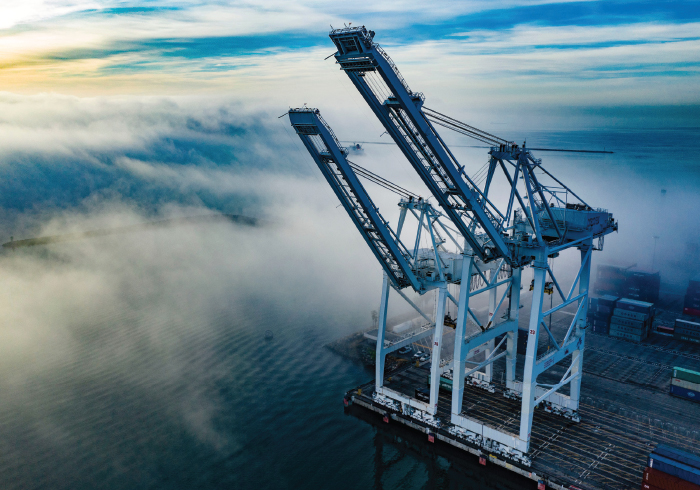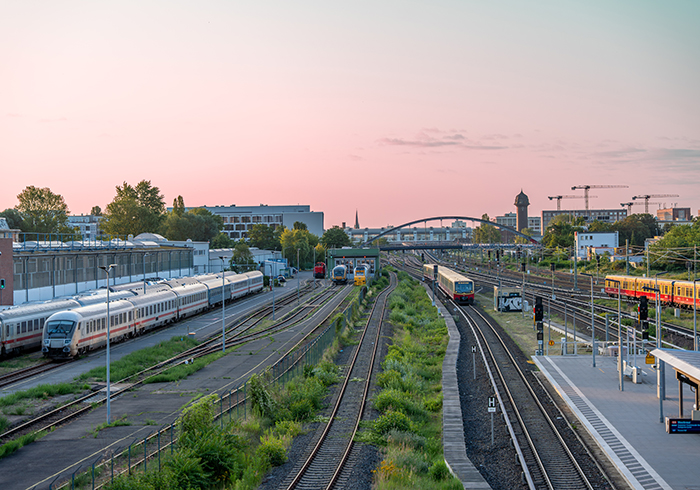The stop-start introduction of tariffs by the US government has had a dramatic effect on US trade in 2025, prompting a surge of imports by companies eager to secure supply before higher duties take effect. But what does this mean for importers’ inventory management and working capital? GTR speaks to industry insiders about why there is unprecedented interest in the country’s foreign trade zone programme.
The uncertainty surrounding US President Donald Trump’s tariff regime has created a highly turbulent and volatile trade environment for the country’s importers.
In the wake of April’s so-called Liberation Day, when Trump announced plans to introduce steep tariffs on major trading partners, the World Trade Organization (WTO) warned of a slump in global goods trade, driven largely by a near-10% drop in US imports.
In practice, the introduction of tariffs has remained highly unpredictable, characterised by last-minute adjustments, delays and deals.
In October, the WTO said trade had in fact continued to grow over the first half of the year as importers rushed to secure goods before higher duties were introduced.
Trade intelligence provider Descartes reported that US container imports rose by 18% month-on-month in July. Though seasonal demand means July is usually a busy month for importers, the figure was nearly 3% higher than for the same month in 2024.
This trend means importers have had to reconsider their strategies around inventory management and supply chain agility, and one mechanism for doing so is to turn to the US foreign trade zone (FTZ) programme.
FTZs are secure areas located on US soil but outside the official stream of commerce, allowing companies to avoid paying tariffs and duties until the moment they leave the zone. Industry insiders say demand for the FTZ programme has soared under the Trump administration.
Established in the early 1970s, the National Association of Foreign Trade Zones (NAFTZ) supports its members’ use of FTZs, which it hails as a unique tool for creating jobs, encouraging investment and improving supply chain efficiency.
The association says there are over 1,300 operations across the country’s FTZs, and goods worth nearly US$150bn were exported from them in 2023. Government figures show there were 374 active FTZ operations in 2023, a 30% increase from a decade earlier.
GTR speaks to industry experts about the increased interest in the programme since Trump’s return to the presidency, and how US importers and manufacturers are taking advantage of FTZs in a highly uncertain trade environment.
Jeffrey Tafel is president of NAFTZ, and Melissa Irmen is the association’s director of advocacy and strategic relations.
GTR: Historically, what role have FTZs played in the US trade landscape, and what kind of companies have made use of them?
Tafel: The programme has been around for a long time, since the 1930s. It enhances the ability of US companies to be a little more competitive on the global market, while also providing a secure pathway for trade in items coming to the US. Numerous companies have taken advantage of the programme over the years, allowing them to invest in the US while maintaining those important global relationships in the trade environment.
Irmen: A variety of companies use the programme, for a variety of reasons, but some of the larger players are in the auto industry, pharmaceuticals and electronics. Warehousing is one purpose; for a lot of retailers, using FTZs for order fulfilment, especially e-commerce, has been a big part of the programme for many years now. There is also manufacturing and transformation, so for example, petroleum refining is very common in US foreign trade zones.
GTR: How has Trump’s tariff regime changed demand for, or interest in, the FTZ programme?
Tafel: The amount of interest that we’re seeing in some markets has been six times or more what the interest levels were prior to the new administration coming in. That’s significantly more interest than we as an association have ever had, and the programme itself has also seen more media coverage than it has ever received.
GTR: What is the main benefit of using an FTZ in this environment?
Tafel: The main benefit of warehousing in an FTZ is the duty deferral aspect, so not having to pay the duties until the goods enter US commerce. An example, your holiday merchandise may arrive in May or June, even though it’s not going to make it out onto the floor until the fall. Those goods can sit in a zone, with no duties due until they actually get shipped out to the stores. president of NAFTZ
Irmen: Duty deferral is across all industries, regardless of what activity you’re doing in the zone, but the unique distinction for us is the ability to do full manufacturing, incorporating domestic material in amongst the foreign source material. That’s unique to our programme.
GTR: Did you see evidence of importers frontloading orders to get ahead of anticipated higher tariffs, and have there been challenges, for instance around capacity?

Tafel: That was definitely something we saw in a lot of zones. Companies were ordering in materials as fast as they could, investing in advance of the tariff changes taking effect. Now, much of the material in the warehouses has been utilised, so back stock is being depleted. That’s causing some new opportunities and new challenges for US businesses and their suppliers around the world.
It’s not so much a capacity issue, more the uncertainty of what tariffs will look like in the future. That uncertainty still remains, and I’m sure we haven’t seen the end of the executive orders yet.
Irmen: Under the 2025 trade remedy tariffs, the duty rate is locked in at the point you bring the goods into the warehouse, or into the foreign trade zone. So if you think that tariffs are going to be reduced, maybe as a result of a trade deal, for example, then there’s uncertainty over whether you store goods now or wait until after the deal has been agreed. And then, how long will it be until it’s published and you know the details? That makes it hard for companies to plan.
GTR: Many of Trump’s tariff announcements have targeted specific commodities. Are there any examples where FTZs address those kinds of trade flows?
Irmen: There is an advantage for goods that are subject to tariff rate quotas. So that’s where if you bring in a commodity under a certain quantity, one rate is applied, and then if the amount goes above that quantity a different rate is used. We’ve seen these in the past with steel and aluminium, for example.
We have seen quite a few producers bring goods into FTZs to manage that quota, again because the tariffs are not due until they leave the FTZ and enter US commerce. If you have a commodity where the tariff rate quota is starting to fill up, or you had a supply chain issue that meant it arrived once the rate was higher, you could put it in an FTZ and wait until the new quota opens before bringing it into US commerce.
GTR: For companies using FTZs, are there additional costs or complications? Does it require additional financing?

Tafel: There are some added regulations that come with using the programme, and companies have to consider whether that works for their operations. One is that you give customs 24/7 access to your warehouse, 365 days a year, and they can come in and make sure the inventory you say is there really is there. There are also security requirements. There are materials sitting on the ground that haven’t had duties paid yet and customs wants to know they are secure.
Irmen: Each company takes a different approach to how they want to manage costs. Many FTZs incorporate the programme into the logistics function that is already established inside their company. Whether or not they need additional financing to support it really just depends on each case.
Most of them just count it as an operational cost, but it is an increased operational cost, and they balance that with the cash flow aspects of it. A lot of companies will take the money they’re holding on to and potentially use it for other investments while they’re waiting to pay the tariffs. Ultimately, the costs are often counterbalanced with that kind of cash flow benefit.
GTR: Have the Trump administration’s trade policies caused any changes to the way FTZs operate?
Tafel: There has been one significant change effected upon companies that use the programme. Prior to these tariff executive orders, US manufacturing in an FTZ had what was called the inverted tariff benefit. That meant manufacturers would be able to import from wherever their suppliers are located, but also bring in domestic materials and products to create something.
The rate of duty owed when the finished good left the US FTZ was that of the finished good, which is sometimes lower than the rate of the individual foreign components.
Take the example of using rubber and other inputs as part of manufacturing a car in an FTZ. When the finished car enters the stream of US commerce, it would be subject to a lower duty rate than all the individual duty rates on those materials as they came in. That was a great benefit for manufacturing.
Unfortunately, the executive orders have removed that benefit, and all of those individual tariff rates are now due as the manufactured product enters US commerce. That’s certainly something the NAFTZ has been advocating to change, to bring that benefit back, because it supports American jobs and American investment.
Jackson Wood is director of industry strategy within Descartes’ Global Trade Intelligence unit.
GTR: How would you characterise the FTZ programme and how it is viewed by the market?
Wood: We’re seeing an incredibly elevated interest in FTZs, as organisations are trying to re-architect their global supply chains to mitigate the volatility that is being forced on the market by all of the tariff whipsaws that are happening. The headline from our perspective is that volatility is going to continue because it’s hard to keep track.
What FTZs do is give importers a lot of flexibility around how they are able to make tariff payments and mitigate their impact. They work similarly to bonded warehouses or global free trade zones, in that they are given special economic and regulatory consideration; they represent a physical location that falls somewhat outside the regular purview of the economy of the US.
An importer can establish an FTZ, even of its own volition, or by a third party like a logistics service provider or a customs broker. When the goods enter, that means they are not technically entering the commerce of the US, so no tariffs are due, no merchandise processing fees are due, and so you are able to mitigate what could be significant cash outlays.
GTR: Are there any restrictions around where an FTZ can be established?
Wood: Traditionally, they are located within 60 miles, or a 90-minute drive, from a US port of entry, although FTZ sites are now often located at further points. The reason to have that proximity is because the port director has to be able to get to the FTZ, inspect it and get back to the port within a day’s work. But it can be a road, air or ocean entry.
GTR: In practical and cost terms, what is the benefit to an importer of using an FTZ?

Wood: If you’re a high-volume importer and you have an FTZ, you could say you will over-index on a particular import transaction. You might be bringing in a million products, but you know you’re only going to sell 10,000 at a time, so rather than write a big cheque for the tariffs on those million items that come in, you’re only going to have to pay the tariffs on the 10,000 that are leaving the FTZ.
If you’re managing your supply chain in an agile way, those products will only be leaving the FTZ when you’re close to being paid for them, and the transaction is liquidated. From a cash flow preservation perspective, you have the flexibility to say you’ll only release the inventory when you know you’re going to be paid for it.
Typically, this has not been something every type of importer has explored, because until recently, the tariff burden was not substantive enough. Now, if we’re looking at tariff burdens of millions of dollars, and tens or thousands of dollars a year in costs, operating in a foreign trade zone could make good financial sense.
GTR: What about for companies that are not only using FTZs for warehousing, but are involved in manufacturing or other activities outside of the stream of US commerce?
Wood: Absolutely, manufacturing or substantially changing imported products inside an FTZ means you only pay the duties or taxes that are due on that final or changed product when it leaves the zone.
But there’s another thing companies can do, which requires some creativity from a supply chain architecture perspective. If you import all of those products into an FTZ, and were originally planning to sell them in the US, they would of course be subject to the tariffs once they leave the zone.
However, if you sell those products to another international economy, maybe in Europe, Mexico or Canada, and you export them directly from the FTZ, you never pay any duty or tax on them in the US. If it’s sold to an international economy, the duty would be based on whatever that international economy’s tariffs are they’re likely to be significantly lower than the US tariffs. Having an FTZ gives you options in terms of how you think about mitigating tariff impacts.








